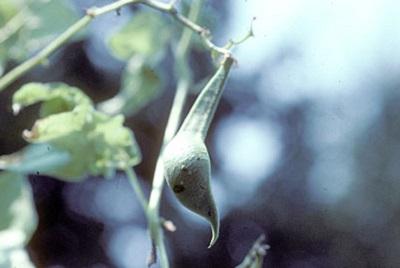
Problems with flowers and blossoms
Poor blossom and fruit set in vegetable crops (especially bean, pepper, tomato) can be caused by prolonged dry or wet soil conditions, very high (can kill pollen) or very low temperatures, excessive shade, excessive nitrogen fertilization, and hot, dry winds. Also, failure to harvest crops regularly can signal plants to slow down flower and fruit production.
Temperature problems
Night temperatures below 60° F. and above 75° F. or day temperatures above 95° F. can cause pepper flowers and small fruits to drop. Plants often stop producing blossoms and fruits during mid-summer if temperatures are high. Fruit production then resumes on healthy plants in late summer and early fall. Tomato flower and fruit production diminishes when temperatures are below 55° F. or above 95° F. Furthermore, low spring temperatures will often cause the first cluster of fruits to be deformed. This is known as "catfacing". Eggplant does not set fruit well until minimum night temperatures exceed 55° F. Bean plants stop flowering or flowers die when temperatures exceed 85° F.


The solution is to provide vegetable plants with adequate sunlight, water and nutrients, and protection from wind. Wetting plant foliage during hot, dry periods can reduce heat stress and encourage flower and fruit set. Locating pepper and tomato plants so they receive late afternoon shade can also help improve season-long yields.
Environmental conditions play a role in the relative numbers of male and female flowers on squash and cucumber plants. Research shows that female flower production is encouraged by cool temperatures, high sunlight and short photoperiod (spring vs. summer) and low nitrogen fertilization. Male flowering is encouraged by high temperatures, low sunlight, high nitrogen fertilization and close space planting.
